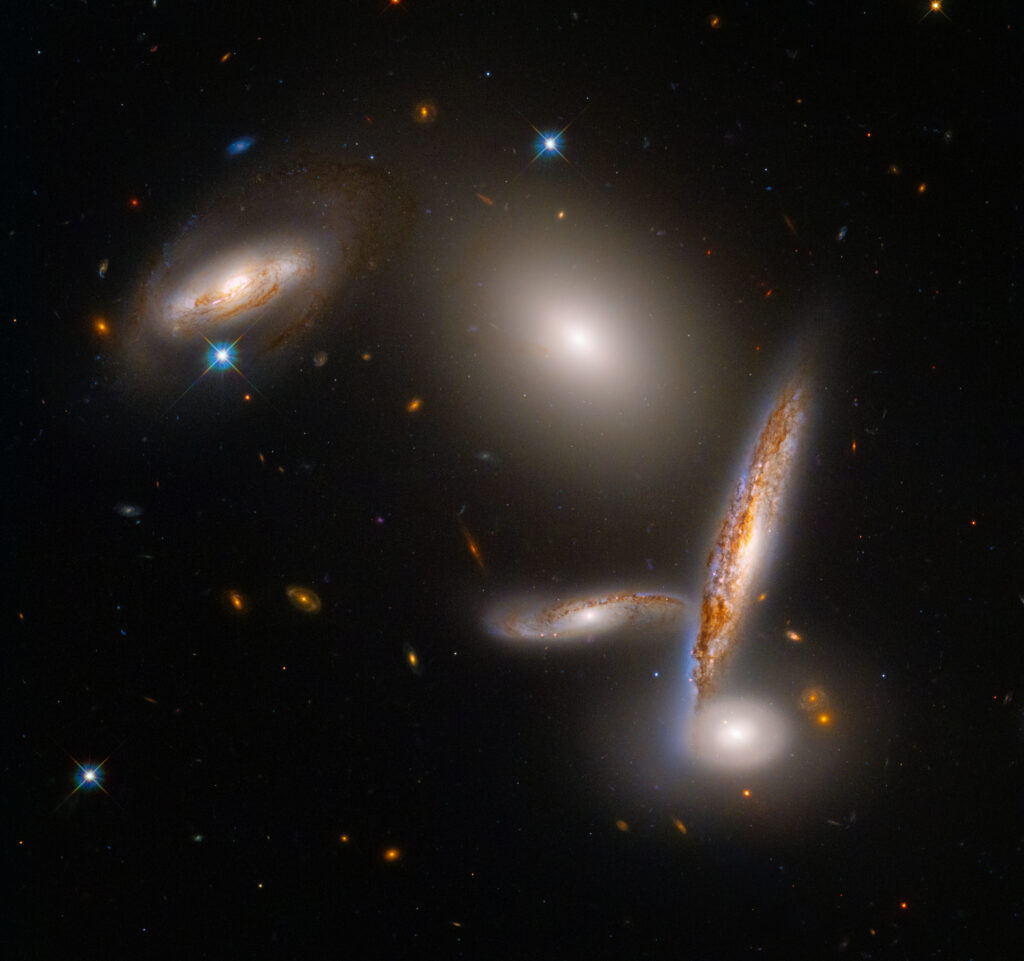On April 24, the Hubble Space Telescope is celebrating its 32nd birthday. In honor of this event, the specialists of the mission support group published a magnificent image showing a cluster of five galaxies known as the Hickson Compact Group 40 (Hickson 40).

The group photographed by Hubble consists of three spirals, one elliptical and one lenticular galaxy. During their journey through the Universe, their paths crossed, and they were drawn into a gravitational dance, which would inevitably end with their merging. To understand how “tight” the cluster is, we note that it might fit into a region of space which has a diameter less than twice the diameter of our Milky Way.
A distinctive feature of the Hickson group is its isolation. As a rule, such close unions can be found in the centers of huge clusters of galaxies. However, the Hickson group is isolated from similar structures. According to astronomers, one of the possibilities is due to the fact that galaxies are connected by a large amount of dark matter.
Astronomers have studied this compact group of galaxies not only in visible light, but also in the radio, infrared and X-ray ranges. Almost every galaxy contains a compact radio source at its core, which is evidence of the presence of a black hole. X-ray observations show that the galaxies interact gravitationally, as evidenced by the presence of a large amount of hot gas among them. They also form new luminaries.
The measurement results show that the distance between the galaxies of the group is gradually decreasing. In about a billion years, they will merge into one giant elliptical galaxy. According to astronomers, in the early Universe, such compact groups of galaxies were much more numerous and their mergers could serve as fuel for powering the first supermassive black holes. In the process of absorbing matter, they radiated such a colossal amount of energy that astronomers use the special term “quasars” to designate them.
According to https://esahubble.org

